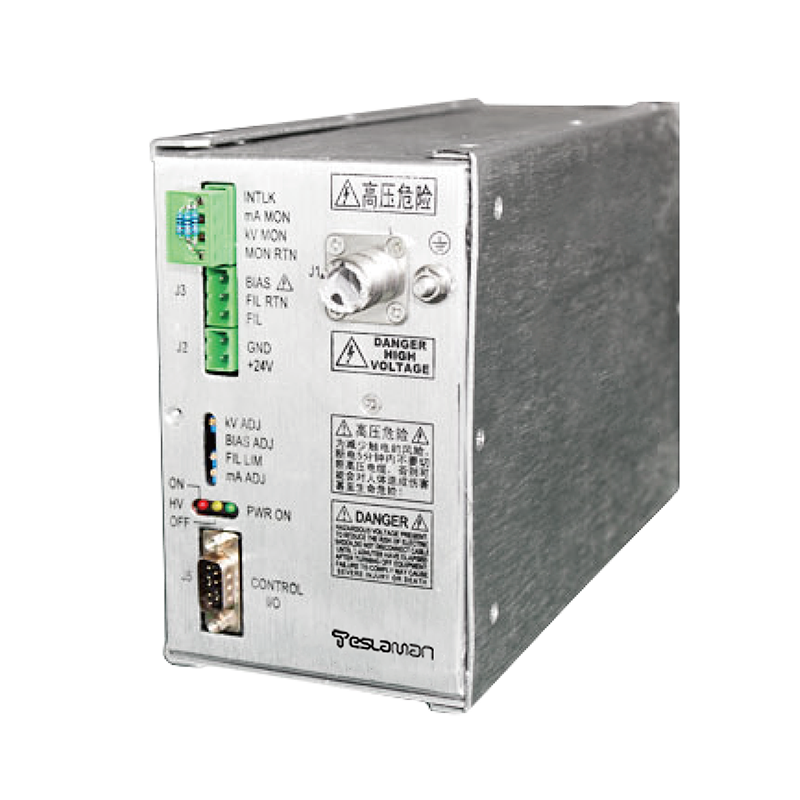Trends in High-Voltage Power Supplies for Semiconductor Testing: Technological Evolution and Application Innovation
1. Iteration of High-Voltage Power Supply Requirements in Semiconductor Testing Scenarios
Semiconductor device testing has extended from traditional DC parameter verification to high-frequency and high-reliability scenarios. As a core component of testing systems, high-voltage power supplies face threefold demand upgrades: first, testing of third-generation semiconductor (such as SiC, GaN) devices requires breaking through the high-voltage range above 2000V, with voltage rise time required to be <10ns to simulate switching transients; second, the demand for multi-channel parallel testing of probe cards in Wafer Acceptance Test (WAT) promotes power supplies toward multi-channel and low-crosstalk directions; third, the AEC-Q101 certification requirements in automotive electronics and industrial control fields force power supplies to maintain ±0.1% output stability in the wide temperature range of -40℃ to 125℃.
2. Analysis of Technical Trends and Innovation Directions
1. High-Frequency Architecture Driven by Wide-Bandgap Devices
New-generation high-voltage power supplies adopt LLC resonant topologies constructed with SiC MOSFETs and GaN HEMTs, with switching frequencies exceeding 1MHz (traditional solutions are mostly 100-500kHz), reducing transformer volume by 60% while increasing conversion efficiency to over 96%. Taking a 1500V/1A power supply as an example, the introduction of SiC devices shortens the dead time to 50ns, effectively suppressing voltage overshoot during switching (<5% of the rated value), meeting the avalanche testing requirements of SiC power modules.
2. Digital Twin and Intelligent Diagnosis System
By embedding an FPGA digital controller, the power supply achieves a closed-loop control of parameter pre演 real-time calibration fault tracing. In dynamic parameter testing of IGBTs, the system can construct device models based on historical test data, predict voltage waveform distortion points in advance, and control the voltage establishment time within 1μs through feedforward compensation algorithms. Tests in a wafer fab show that this technology reduces the misjudgment rate of test yield by 72% and shortens the single-point test time from 50ms to 15ms.
3. Multi-Physical Field Collaborative Optimization Design
In thermal management, micro-channel liquid cooling and phase-change material composite cooling technologies are used to control the junction temperature fluctuation of power devices within ±2℃, meeting the high-temperature cycle testing requirements of automotive-grade devices; in EMC design, 3D field simulation is introduced, and distributed LC filter networks suppress common-mode interference in the 30-1000MHz frequency band to below -60dBμV, avoiding interference with precision acquisition equipment such as oscilloscopes.
3. Emerging Application Scenarios and Market Penetration
1. Reliability Testing of Power Semiconductors
In the UIS (Unclamped Inductive Switching) testing of automotive-grade IGBT modules, the new high-voltage power supply accurately simulates the transient overvoltage conditions during motor stalling through bipolar pulse output (5ns rise time/3ns fall time). An application case by an automotive chip manufacturer shows that this solution improves the positioning accuracy of module failure analysis to the microsecond level, increasing testing efficiency by 3 times compared with traditional solutions.
2. Integration of Advanced Packaging Testing Power Supplies
For voltage withstand testing of 3D IC stacked packages, the power supply adopts a modular design, supporting 16-channel independent output (0-3000V adjustable per channel), with crosstalk between channels <0.01%. When combined with a probe station for wafer-level parallel testing, it can complete the TDDB (Time-Dependent Dielectric Breakdown) testing of an entire 8-inch wafer within 10 minutes, increasing efficiency by 15 times compared with traditional single-channel solutions.
4. Future Technology Evolution Roadmap
Short term (2025-2027): With the popularization of advanced processes such as GAAFET, high-voltage power supplies will introduce hybrid modulation technologies of Pulse Width Modulation (PWM) and Pulse Amplitude Modulation (PAM) to achieve sub-nanosecond pulse width control; medium term (2028-2030), predictive maintenance systems based on digital twins will become standard, predicting potential failures such as capacitor aging 72 hours in advance by real-time monitoring of more than 200 sensor data inside the power supply; in the long term, the integration of superconducting magnetic energy storage technology and solid-state transformers may reduce the volume of high-voltage power supplies to 1/10 of the existing solutions while maintaining 10kV-level output.




















